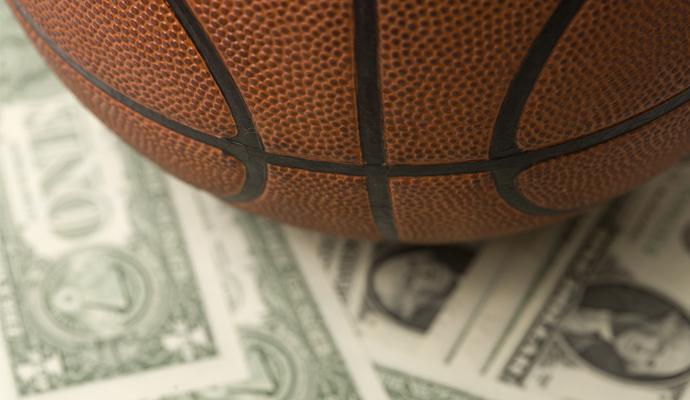Doing the Super Bowl Ad Math
Popular commercials aired during the big game can drive up a firm’s stock price, but only if the brand is relatively unknown or has a flagging reputation.
Bottom Line: Popular commercials aired during the big game can drive up a firm’s stock price, but only if the brand is relatively unknown or has a flagging reputation.
When the Atlanta Falcons take on the New England Patriots at Super Bowl LI, there’s a lot more on the line than the Lombardi trophy. No other televised event (pdf) in the U.S. draws as many viewers or whips up as much media attention, meaning the game on the field is only part of the attraction. For many businesses, ad agencies, analysts, and casual viewers, the fiercest competition plays out during commercial breaks, when some of the top companies roll out new products or seek to burnish their image with attention-grabbing spots.
Over the years, researchers have searched in vain for compelling evidence that these ads justify their price tags. And considering that 30-second ad spots this year cost in excess of US$5 million, the stakes have never been higher, especially as handheld devices and other technologies are pulling viewers’ attention in what seems like an endless number of directions.
Although successful spots have been found to pay off in short-term buzz, companies are still waiting for confirmation that these costly commercials have a sustained impact on increasing brand awareness or boosting overall firm value in the form of market capitalization.
Enter the authors of a new study, who asked: Are Super Bowl ads “a super waste of money”? The short answer is “not necessarily.” And for certain firms, they can really pay off.
Because stock price has long been recognized as an unbiased estimate of a public company’s inherent worth, the authors began by calculating the abnormal returns — or the difference between a company’s expected and actual stock price — for each brand they studied. They tracked the measure starting a few days before the Super Bowl in which the company’s ad appeared and ending some days afterward, by which time, the authors reasoned, consumer perceptions about the commercial should have sunk in.
The authors analyzed brands that belonged to publicly listed firms that ran ads during the five Super Bowls from 2008 to 2012, excluding any companies that had other significant events (such as the release of quarterly earnings) during the study period that could skew stock price and brand perception.
They then looked for patterns to explain why certain firms seemed to have little or no stock-price boost after their commercial’s airing, whereas others enjoyed a significant positive bounce. That’s when they discovered that pre–Super Bowl customer-based brand equity — customers’ “thoughts, feelings, perceptions, images, and experiences” related to a given brand — had a strong correlation with stock-price movement after an ad had aired.
To measure customer-based brand equity, the authors analyzed data from YouGov, which tracks consumer perceptions of more than 1,000 major brands via daily surveys of U.S. consumers. In effect, the organization seeks to measure word on the street and the “wisdom of the crowd,” weighting respondents by age, race, gender, education, income level, and location.
The authors calculated the pre-game brand equity scores for each firm, then tracked changes in brand perception that occurred for up to a week after a commercial’s airing. This allowed time for consumers to share the clip on social media, spread word of mouth about the spot, and read reviews about the commercial — in short, all the things that influence people’s perceptions of an advertised brand.
After controlling for several factors that could help or hinder an ad’s impact — including marketing experts’ ratings, the total time it ran, whether it aired during the first or second half of the game, and the number of Super Bowl commercials the brand had aired in the previous 10 years — the authors found there was no universal effect, either good or bad, of Super Bowl spots on firms’ stock returns.
The authors found there was no universal effect, either good or bad, of Super Bowl spots on firms’ stock returns.
However, the roughly two-thirds of firms that increased their customer-based brand equity in the wake of the ad spot did see positive abnormal returns following the big game. In other words, the payoff from Super Bowl commercials depends on an ad’s ability to generate and increase positive associations among a wide and diverse consumer base. If brand managers and ad executives can’t achieve that, then Super Bowl ads are indeed not worth the investment.
But even the positive impact of brand equity on abnormal returns varies depending on whether the brand comes into the Super Bowl boasting a relatively high or low opinion rating with consumers. For brands with already high equity levels, airing a Super Bowl ad provides only a minimal boost to the stock price. But for those with low equity levels, a successful Super Bowl ad can move the stock ticker significantly in a positive direction.
The reason, the authors posit, is that brands that advertise during the Super Bowl are typically mature and well known. Because most consumers have already chosen their preferred brand in that sector, airing high-profile commercials is largely a defensive action, designed to protect market share. The advertising isn’t intended to change minds and attract new customers as much as it is to maintain the status quo.
Investors may therefore associate greater long-term benefits with a prominent ad aired by a brand with a relatively low standing with consumers — presumably, one that’s either building its reputation or repairing damage to its image.
Finally, the authors warn marketers not to get caught up in what they believe to be the comparatively superficial ratings handed out by consumer panels such as the USA Today Ad Meter, arguing such ratings can give a warped sense of commercials’ effectiveness. So can all the media attention surrounding the ads both leading up to and after the Super Bowl. According to the authors, the kind of instant likeability assessed via snap focus groups is not as reliable an indicator of an ad’s ultimate impact as the measure of brand equity, which takes into account more lasting consumer impressions.
Source: “Are Super Bowl Ads a Super Waste of Money? Examining the Intermediary Roles of Customer-Based Brand Equity and Customer Equity Effects,” by Sascha Raithel (Freie Universität Berlin), Charles R. Taylor (Villanova University), and Stefan J. Hock (George Mason University), Journal of Business Research, Sept. 2016, vol. 69, no. 9




